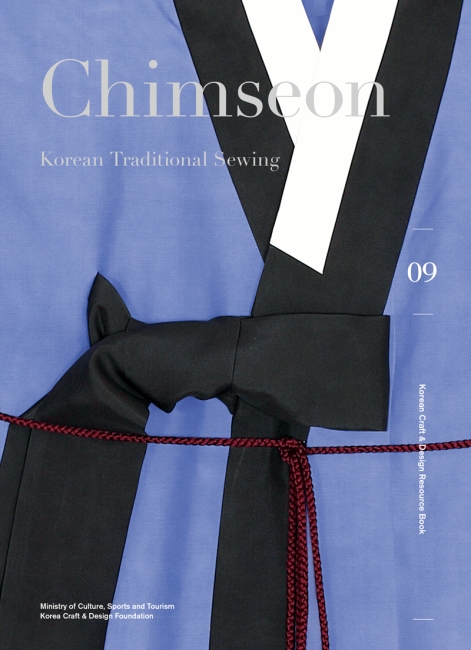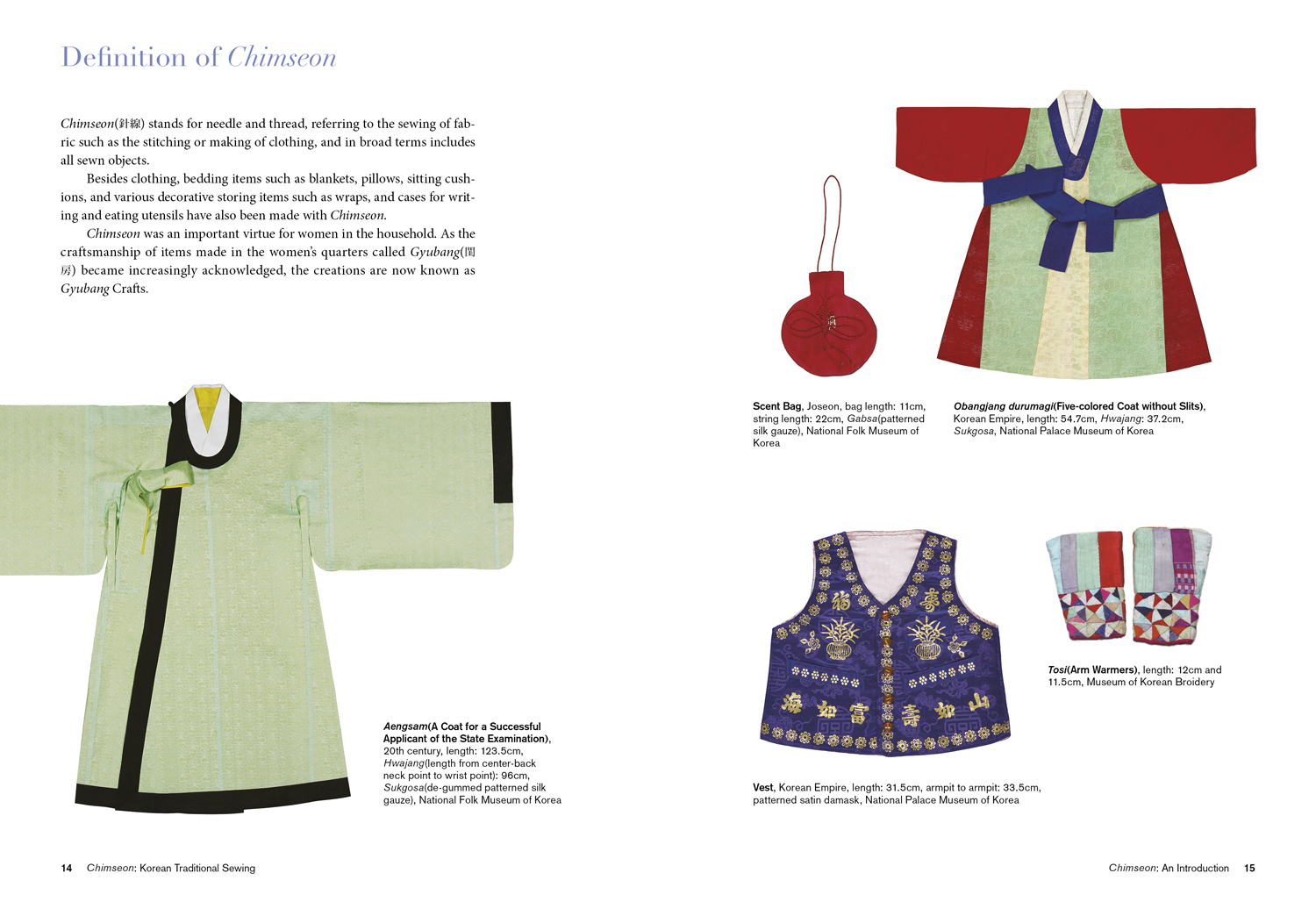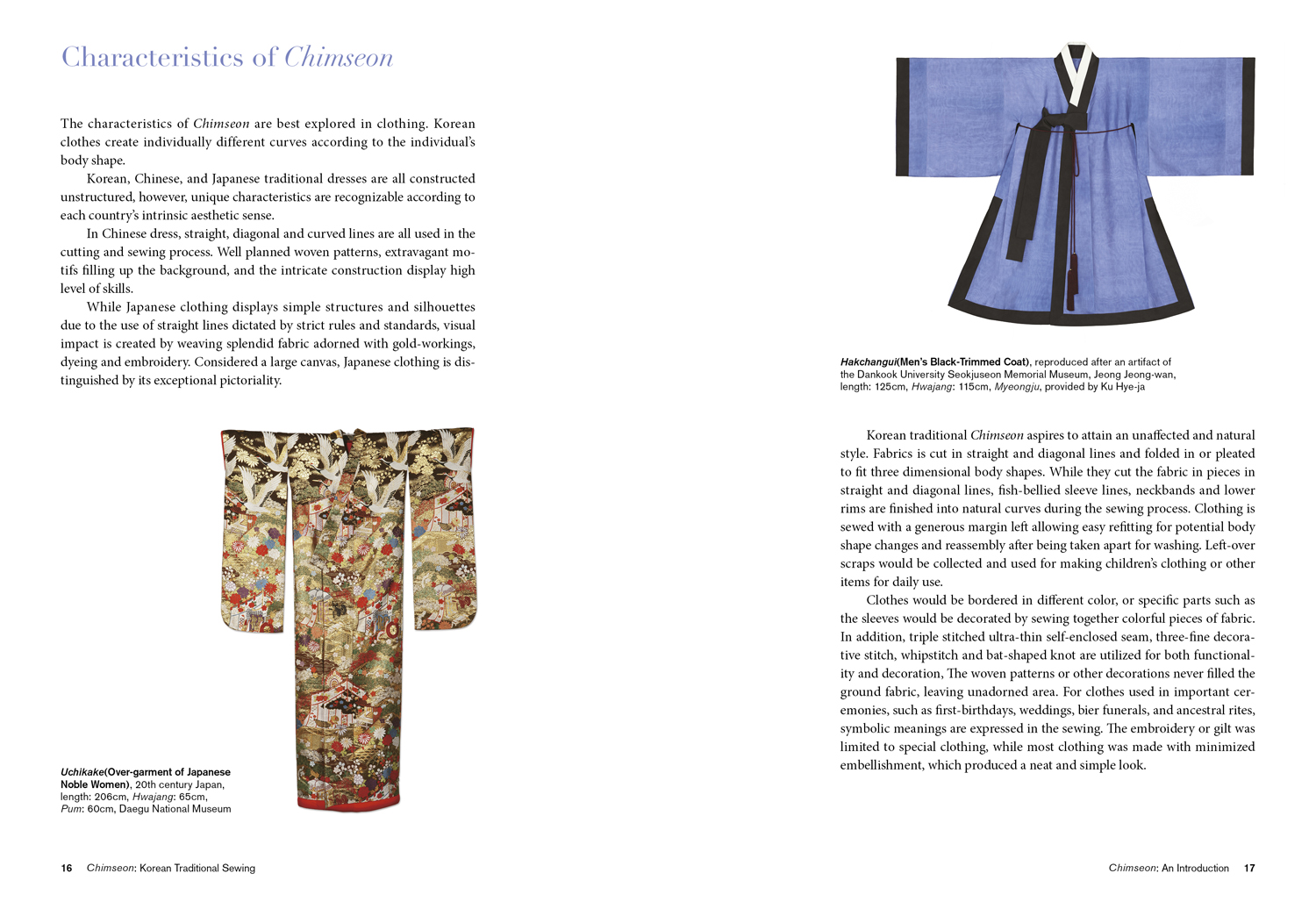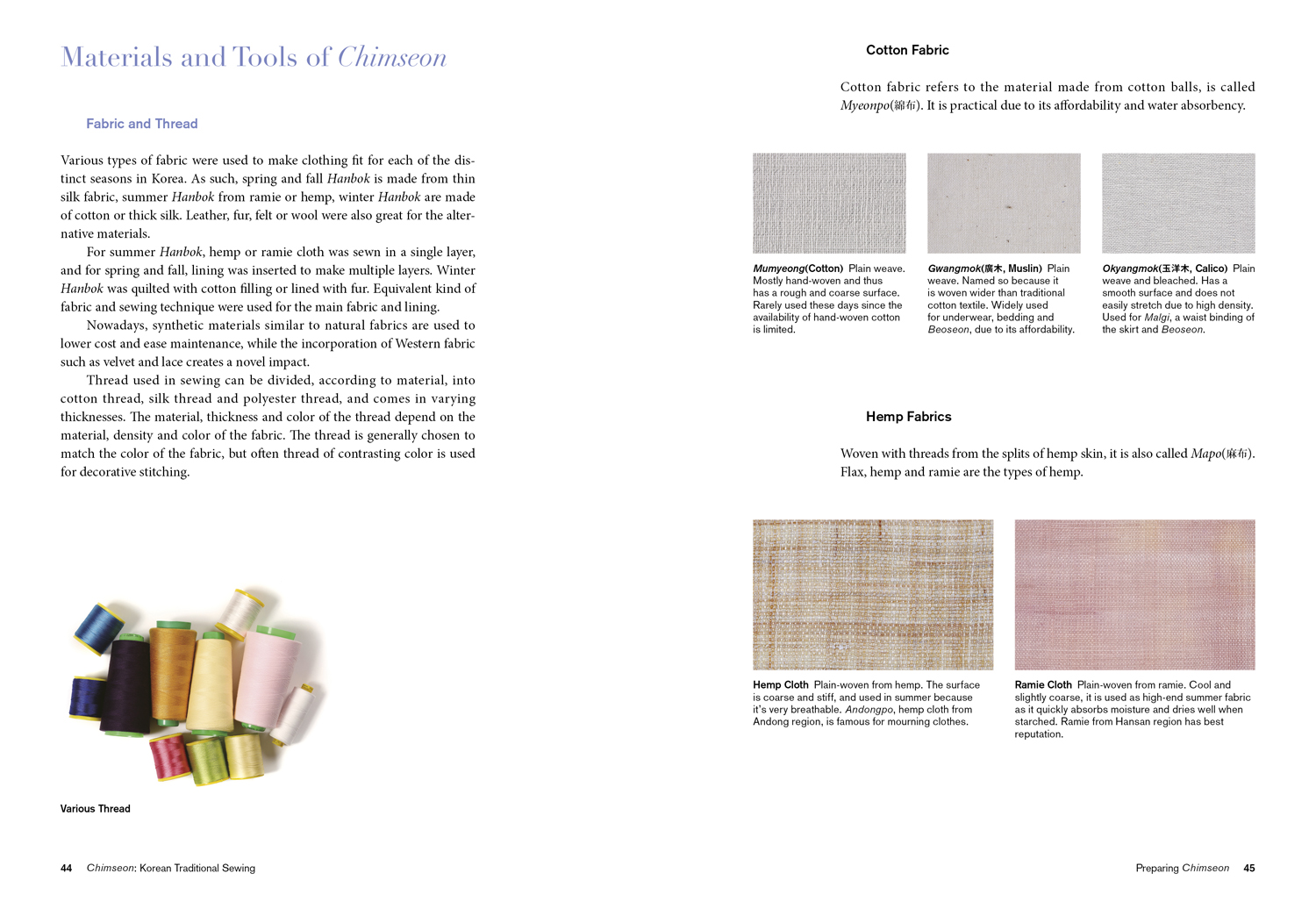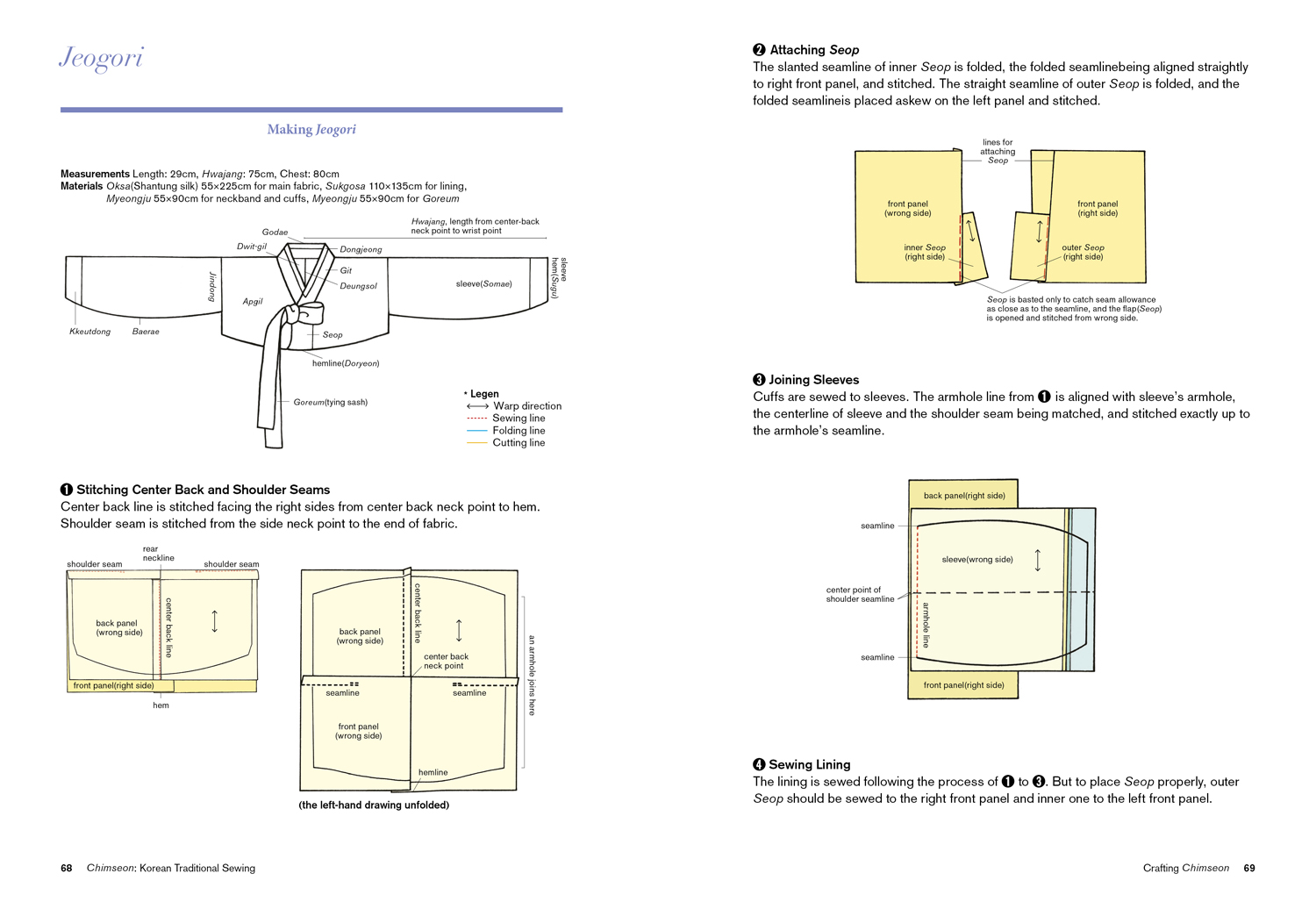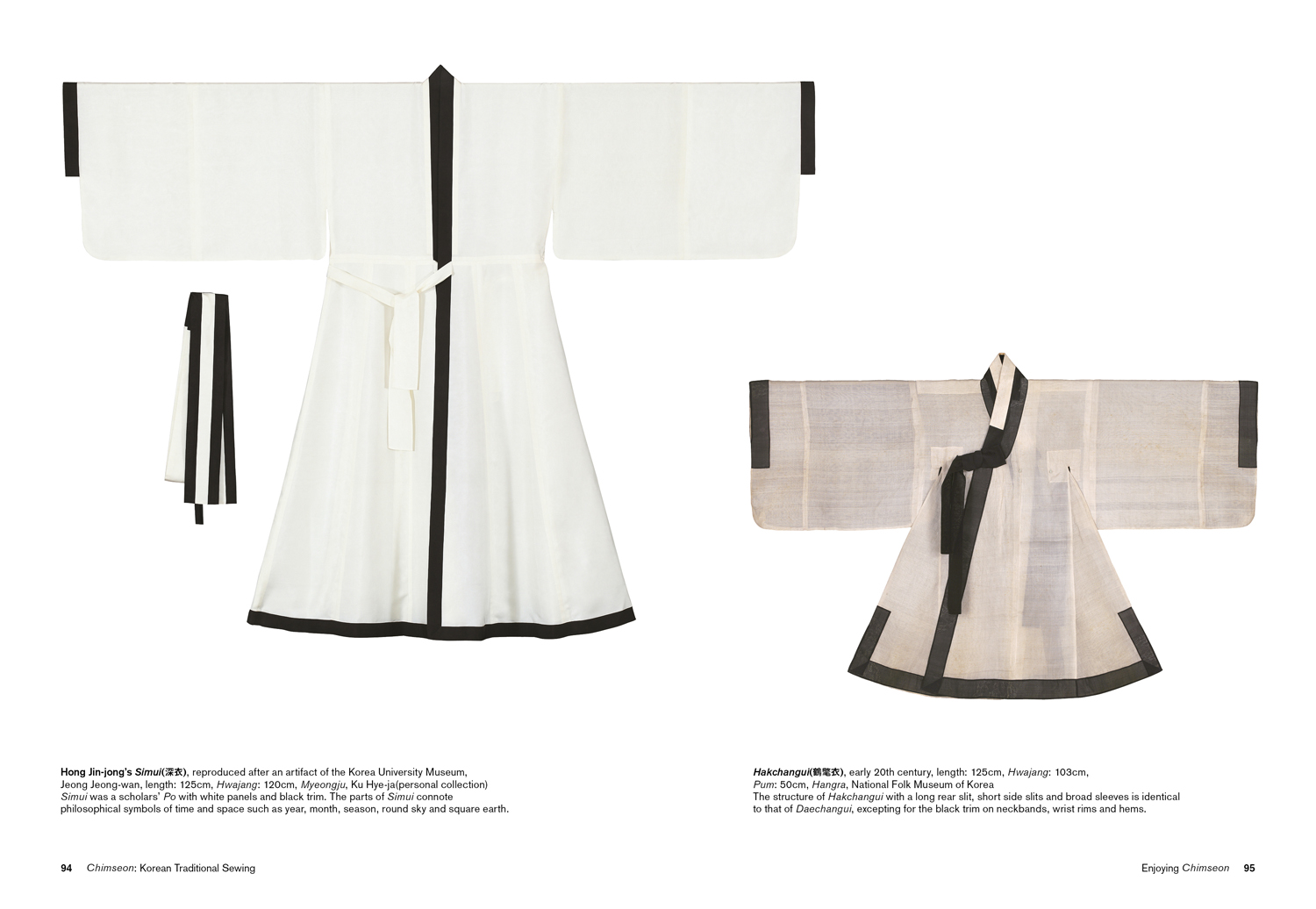분야별 도서 분야 별로 보는 미진사 도서
Chimseon
Copious books and research material have been published on Chimseon, however, most of them targets professionals and are difficult to understand for the general public. Thus, Chimseon: Korean Traditional Sewing was conceived to make Chimseon easily understandable and readily available to anyone. While Chimseon usually refers to sewing only, in this book, its definition was expanded to encompass Chimseon as a process as well as the resulting product, Korean garments. Various visuals were included throughout the book to better convey the beauty of Korean Chimseon and to younger generations everywhere.
The first chapter: “Chimseon: An Introduction”, introduces the definition, characteristics, history, various types and the masters of , who have been succeeding Korean in its quintessential form in the royal household of the Joseon dynasty.
The second chapter: “Preparing Chimseon”, explores materials, tools, basic and decorative techniques necessary for. Following the basic processes provided in this chapter will make the skills available for the creation of various products to readers.
The third chapter: “Crafting Chimseon”, outlines the crafting of basic items, i.e. upper garment, skirt, pants, traditional vest, and patchwork wrapping cloths, a representative item of women’s quarters. methods have evolved over time and vary slightly from master to master, thus the most commonly used methods are introduced here. Effort was made to provide a systematic guide of the process, to convey the order and process concisely, yet sufficiently.
The fourth chapter: “Enjoying Chimseon”, explores how our ancestors utilized in artifacts and introduces modern reinterpretations made to suit contemporary aesthetics by today’s masters. Despite the difficulty to choose from among a myriad of artifacts and modern pieces, an attempt was made to provide a comprehensive selection, sufficient enough to introduce all of the diverse aspects of enjoyed through various time periods and social classes, genders and ages.
We present this book with the hope of introducing Korean to foreign audiences and providing it with an opportunity to be appreciated and enjoyed by many more people.
Chapter 1.
Chimseon: An Introduction
Definition of Chimseon 14
Characteristics of Chimseon 16
History of Chimseon 18
Arts and Types of Chimseon 32
Chapter 2.
Preparing Chimseon
Materials and Tools of Chimseon 44
Chimseon Methods 52
Chapter 3.
Crafting Chimseon
Jeogori 68
Chima 74
Baji 78
Baeja 82
Jogak-bo 86
Chapter 4.
Enjoying Chimseon
Subtle Wit Glistening in Dignity – Po 92
Asymmetric Yet Well-balanced – Jeogori 104
Aesthetics of Curves and Slits – Dang-ui 108
As Practical As It Is Beautiful – Baeja 114
Graceful Appearance from the Back – Ceremonial Chima 120
Delicate Dualism of Hiding and Exposing – Undergarments 126
Square Artistry of Daily Life – Jogak-bo 132
Born from Women’s Nimble Fingertips – Sundries in Gyubang 138
Creation of Motherly Devotion – Children’s Clothing 144
Appendix
Masters 154
Craft & Design Map 155
List of Artifacts and Illustrations 156
Bibliography 160
Collaborators 162
Index 163
It was only a century ago that sewing machines became available in Korea. Until then, everything from clothing to small items had to be hand-sewn.
Chimseon, Korean traditional sewing, perfectly reflects the philosophy of life of Korean ancestors and the cultural identity, demonstrating stitch by stitch how elaborate work and the sense of aesthetics create a subtle beauty.
Today, Korean traditional sewing has made a comeback. The has captivated Western audiences since the 1990s, when designers began to introduce the flowing garments to the runways of Paris. Reflecting growing global interest in the boosted by the rising popularity of various Korean cultural contents in recent years, Karl Lagerfeld has presented a Hanbok-inspired line of clothing at the 2015 Chanel Cruise Collection. Traditional has thus been plunked out of obscurity and is becoming a sought-after source of novel inspiration for fashion designers around the world. Consequently, and items that had previously been forgotten have resurfaced in our daily lives as their new interpretations garner positive responses from younger generations.
This book was written to make Chimseon readily available to a wider audience. As the creative possibilities born from needle and thread are virtually endless. This book is a valuable guide for designers seeking inspiration in traditional Korean.

